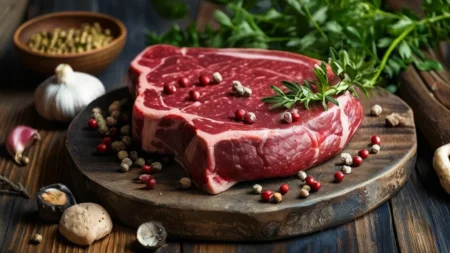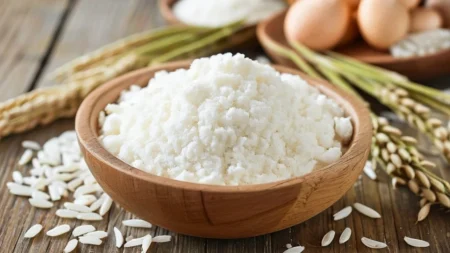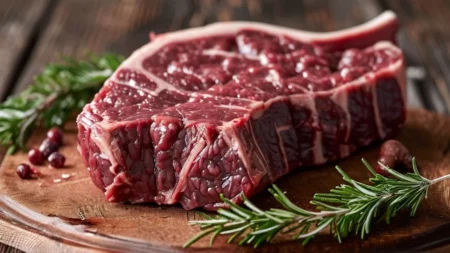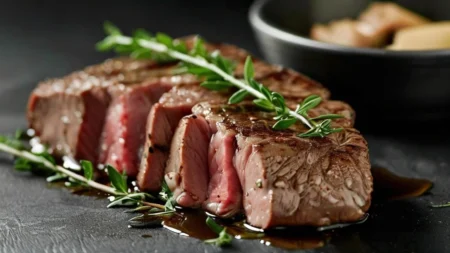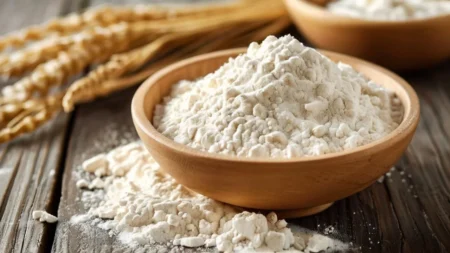Corn Flour: A Versatile and Gluten-Free Alternative
Key Takeaways:
- Corn flour is a finely ground powder made from dried corn and is commonly used in baking and cooking.
- It is gluten-free and a good alternative for people with celiac disease or gluten intolerance.
- Corn flour provides essential nutrients like fiber, vitamins, and minerals, but should be consumed in moderation due to its high carbohydrate content.
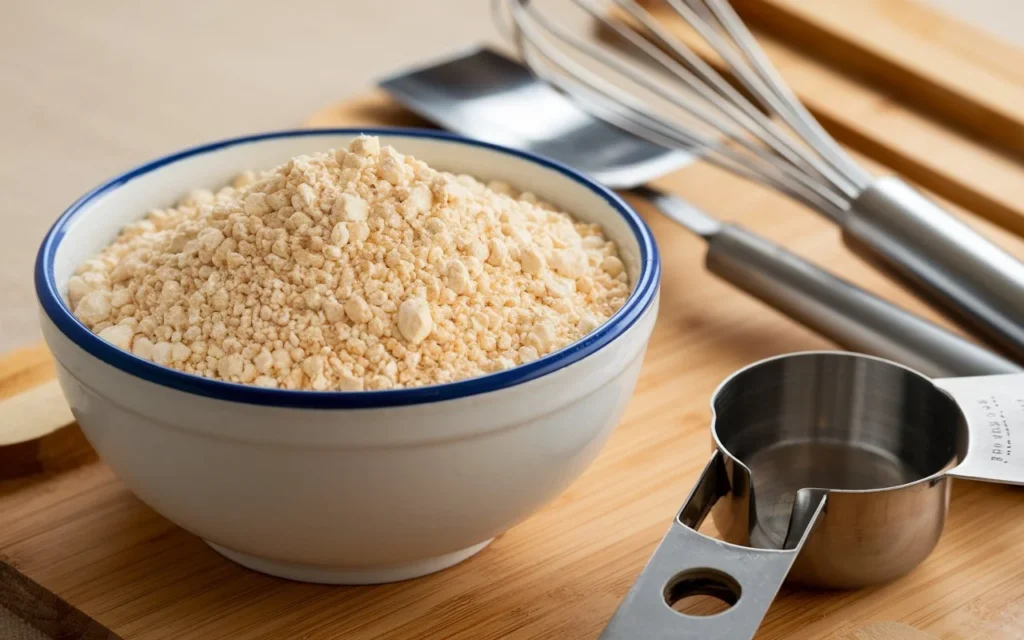
What Is Corn Flour?
Corn flour is a finely ground powder made from dried corn kernels. It can be made from yellow, white, or blue corn and is commonly used in various cuisines to thicken sauces, make tortillas, or as an ingredient in baked goods. Unlike cornmeal, which has a coarser texture, corn flour is smooth and powdery, similar to wheat flour. It’s popular in gluten-free baking as a substitute for wheat flour and is used around the world in many traditional recipes.
Nutritional Profile (Per 100g of Corn Flour)
| Nutrient | Amount |
|---|---|
| Calories | 361 kcal |
| Protein | 6.9 grams |
| Carbohydrates | 76.9 grams |
| Fiber | 7.3 grams |
| Fat | 3.5 grams |
| Iron | 2.3 mg (13% DV) |
| Magnesium | 127 mg (30% DV) |
Different Types of Corn Flour
Corn flour comes in several varieties, depending on how it’s processed and the type of corn used. Each type has unique properties that make it suitable for different recipes.
1. Yellow Corn Flour
Yellow corn flour is the most common variety and is made from dried yellow corn. It has a slightly sweet flavor and is widely used in cornbread, pancakes, and as a thickener for soups and sauces.
2. White Corn Flour
White corn flour is made from white corn and has a more neutral flavor compared to yellow corn flour. It is commonly used in tortillas, tamales, and other Latin American dishes.
3. Blue Corn Flour
Blue corn flour, made from blue or purple corn, is less common but has a distinctive color and flavor. It’s higher in antioxidants due to its darker pigment and is often used in specialty dishes like blue corn tortillas or chips.
Health Benefits of Corn Flour
Corn flour is not just versatile; it also offers several health benefits due to its nutrient content. Here’s how it can be a valuable addition to your diet:
1. Gluten-Free Option
For individuals with celiac disease or gluten intolerance, corn flour is an excellent alternative to wheat flour. It allows people to enjoy baked goods, pancakes, and other foods without triggering gluten-related symptoms.
2. Good Source of Fiber
Corn flour is rich in fiber, which helps regulate digestion and maintain a healthy gut. The fiber content can aid in preventing constipation and promoting overall digestive health.
3. Provides Essential Nutrients
Corn flour is a good source of essential vitamins and minerals, including iron, magnesium, and B vitamins like niacin and thiamine. These nutrients support energy production, red blood cell formation, and nerve function.
4. Supports Eye Health
Corn, especially yellow corn flour, contains lutein and zeaxanthin, two antioxidants that are beneficial for eye health. These compounds help protect against age-related macular degeneration and cataracts.
Potential Drawbacks of Corn Flour
While corn flour offers several benefits, there are also some considerations to keep in mind when incorporating it into your diet.
1. High in Carbohydrates
Corn flour is high in carbohydrates, which can cause a rapid spike in blood sugar levels, especially in people with diabetes or insulin resistance. It’s important to balance corn flour with other low-carb, high-fiber foods to prevent blood sugar fluctuations.
2. Limited Protein Content
Compared to other flour alternatives like almond or chickpea flour, corn flour is relatively low in protein. If you’re using corn flour in your diet, it’s important to combine it with other protein-rich ingredients to ensure a balanced meal.
How to Use Corn Flour in Cooking
Corn flour is a versatile ingredient that can be used in a wide range of recipes. Here are some popular ways to use it:
1. Baking
Corn flour can be used in baking to make cornbread, muffins, or pancakes. It can be combined with other gluten-free flours like rice or almond flour to create a soft, tender texture in baked goods.
2. Thickening Agent
Corn flour is often used as a thickening agent in soups, sauces, and gravies. Its fine texture makes it ideal for creating smooth, velvety sauces without any lumps.
3. Tortillas
In Latin American cuisine, corn flour is the main ingredient in traditional tortillas. When combined with water and pressed into flat circles, corn flour forms the base of tacos, enchiladas, and other popular dishes.
Corn Flour in Global Cuisines
Corn flour is a staple ingredient in many cuisines around the world. Let’s take a look at how it’s used in different cultures:
1. Mexican Cuisine
In Mexico, corn flour is used to make tortillas, tamales, and pupusas. These dishes are fundamental to Mexican cuisine and provide a gluten-free base for a variety of meals.
2. American Southern Cuisine
Cornbread, a Southern favorite, is made primarily with corn flour. It’s often served alongside barbecued meats, stews, and chili, offering a slightly sweet, crumbly texture.
3. Italian Cuisine
Corn flour, or polenta, is a traditional Italian dish that’s boiled and served as a creamy porridge or allowed to cool and solidify before being fried or grilled.
Conclusion
Corn flour is a highly versatile and nutritious gluten-free alternative to wheat flour. It can be used in baking, cooking, and as a thickening agent in a variety of dishes. While corn flour offers essential nutrients like fiber and vitamins, it’s important to consume it in moderation due to its high carbohydrate content. Whether you’re making tortillas, cornbread, or thickening a sauce, corn flour is a valuable addition to any gluten-free diet.
FAQ
Q: Is corn flour the same as cornstarch?
A: No, corn flour is made from whole corn kernels and is more nutritious, while cornstarch is extracted from the starchy part of the kernel and used as a thickener.
Q: Can I substitute corn flour for wheat flour in recipes?
A: Yes, corn flour can be used as a gluten-free substitute for wheat flour, but it’s best combined with other flours for better texture in baking.
Q: Is corn flour safe for people with diabetes?
A: Corn flour is high in carbohydrates, which can raise blood sugar levels. People with diabetes should monitor their portion sizes and consider pairing corn flour-based foods with fiber-rich ingredients.
Q: How should corn flour be stored?
A: Corn flour should be stored in an airtight container in a cool, dry place. If stored properly, it can last for up to a year.
Q: What’s the difference between cornmeal and corn flour?
A: The main difference is texture—cornmeal is coarser, while corn flour is finely ground. Both can be used in cooking, but corn flour is better for smooth sauces and tender baked goods.





